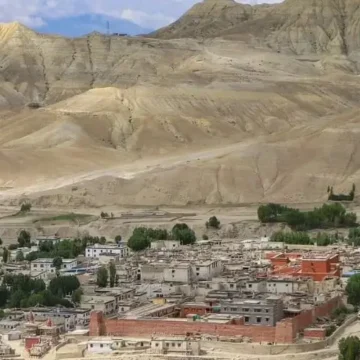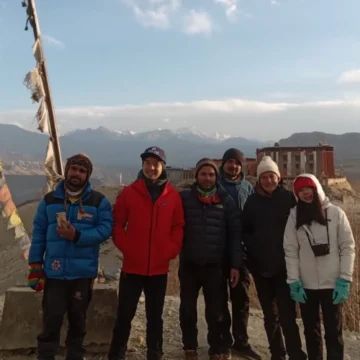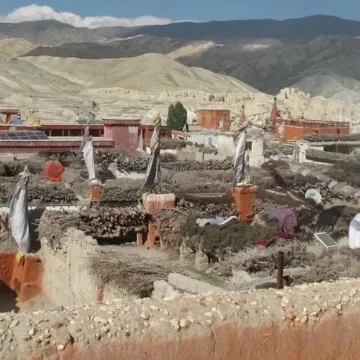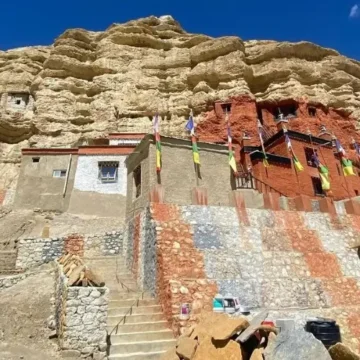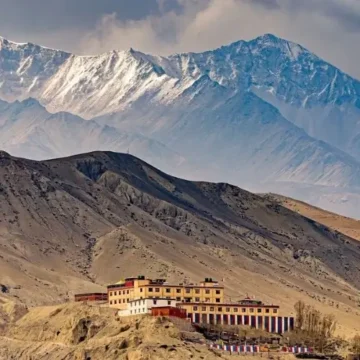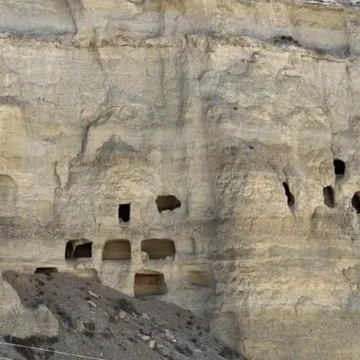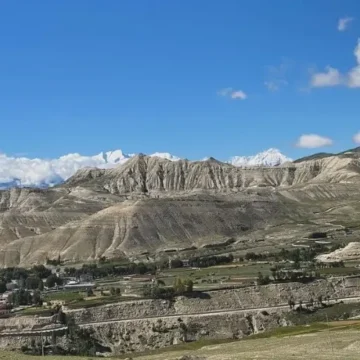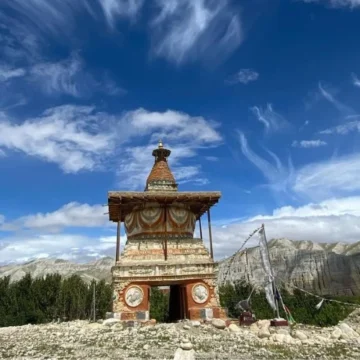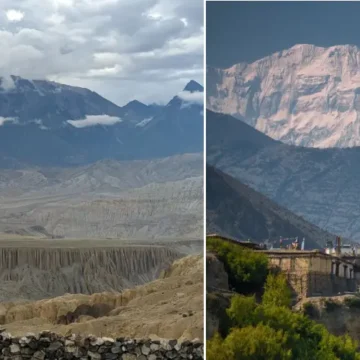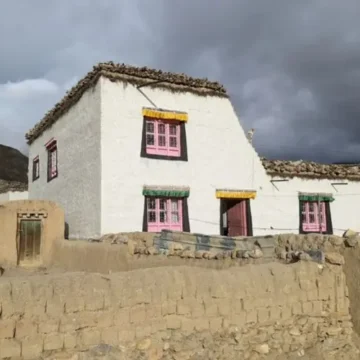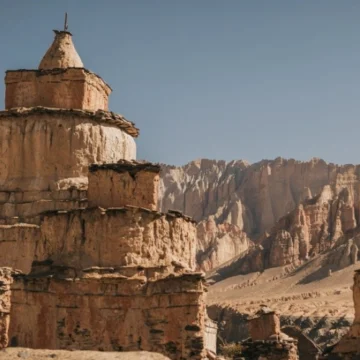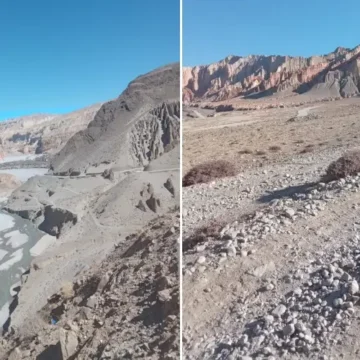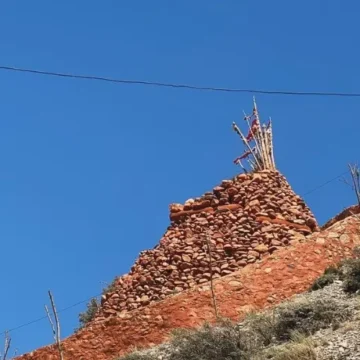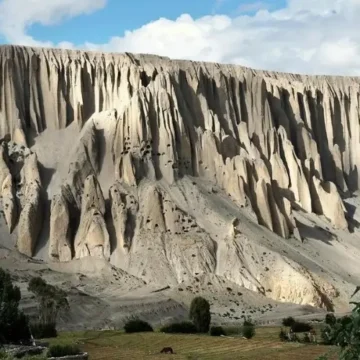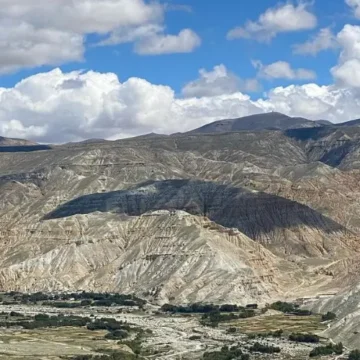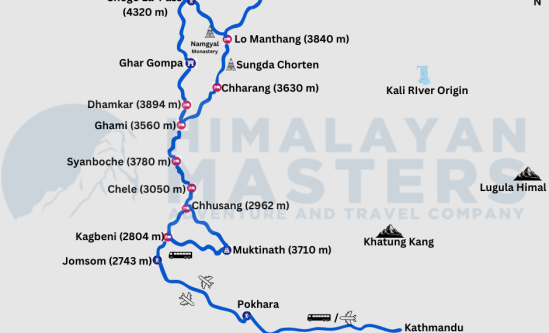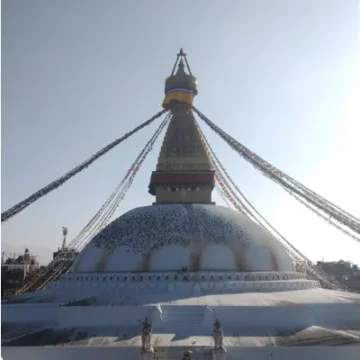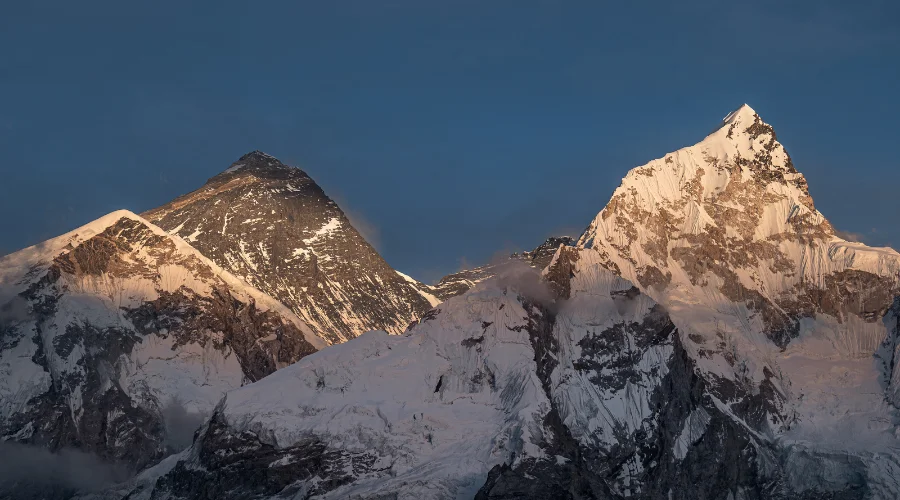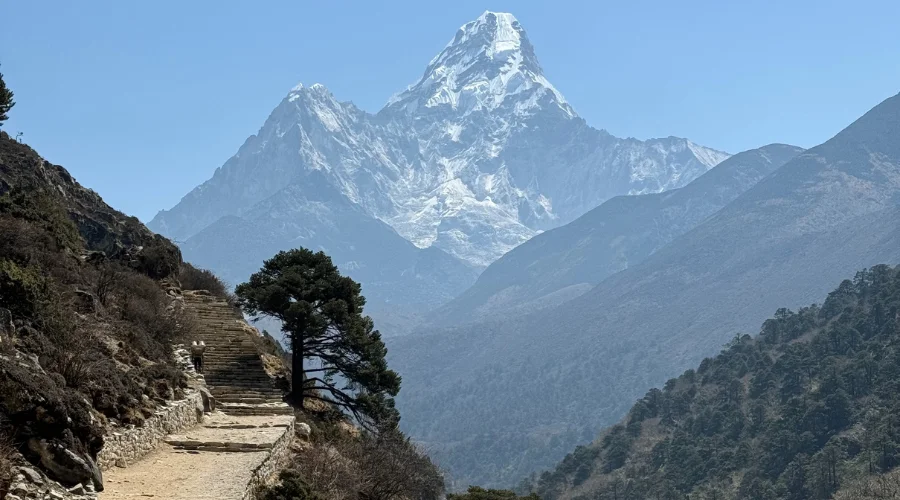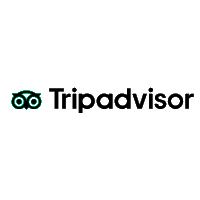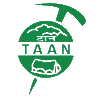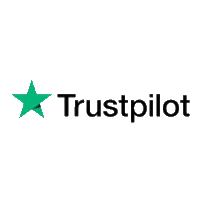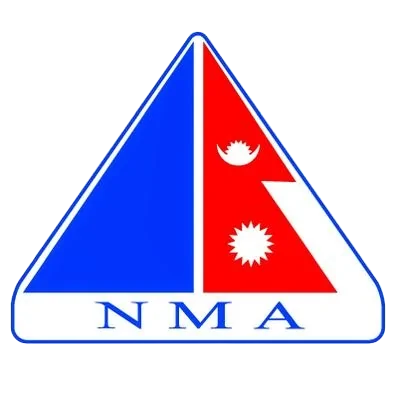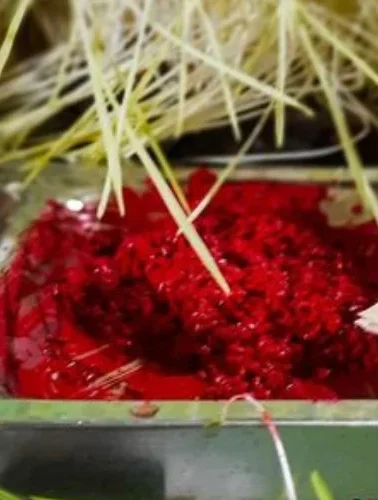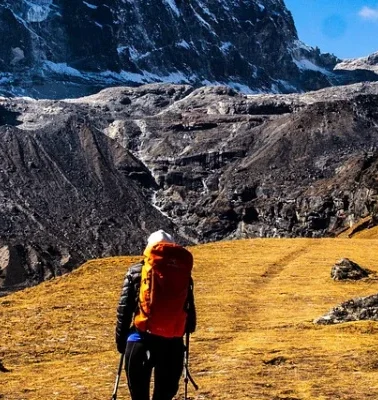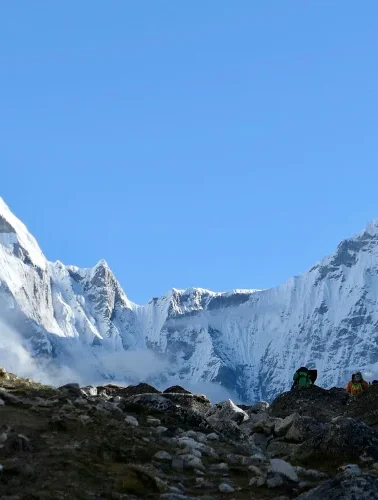
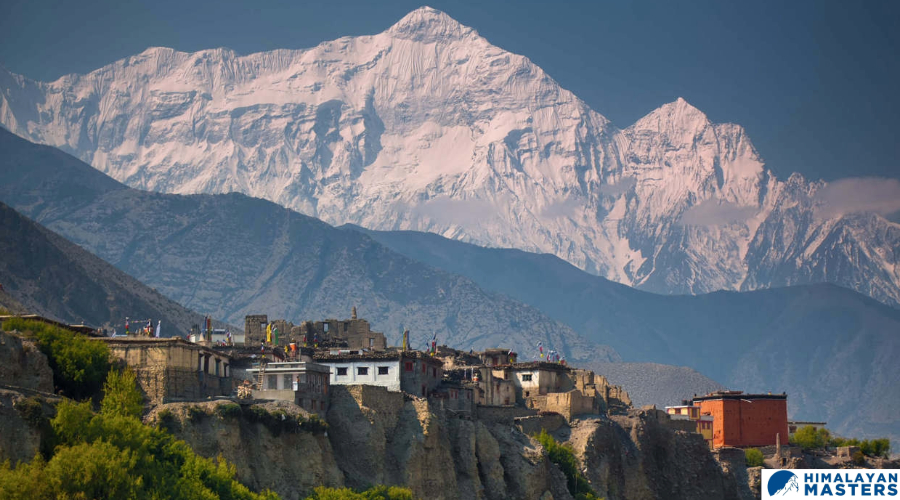
- TRIP DURATION
- 14 Days
- MAX. ALTITUDE
- 4230 m/ 13878 ft.
- TRIP GRADE
- Easy
- LODGING
- Hotel & Tea House
- BEST SEASON
- March to November
- MEALS
- Breakfast, Lunch & Dinner
- COMMUNICATION
- Wi-Fi/ Local SIM Card
- PER DAY WALK
- 5 to 6 Hours
Upper Mustang Trek
The colourful land of Mustang is literally a paradise for mankind. Gracefully placed in the western-north section of the country, the Upper Mustang trek is among the best treks of Nepal around the Mustang region. This ancient forbidden kingdom’s culture and history are hidden from the entire world. Brave, adventurous souls have yet to discover the wonders. The region is a marvel of natural and cultural wonders.
Mustang lies beyond the Himalayas of Annapurna and Dhaulagiri. The total Upper Mustang Trek distance is 422.5 km/ 262.52 miles from Kathmandu, with 64.5 km/ 40 miles trek distance from Jomsom to Upper Mustang. This district has two regions- Lower and Upper Mustang. While the lower Mustang is very busy and vibrant, while the Upper region of the Mustang is still a restricted region.
To visit around the “Forbidden Kingdom of Nepal”, you will need to obtain a special permit.
What is the story of Upper Mustang?
Upper Mustang, the most preserved land in the world, has been walled and protected for centuries. It was built in 1380 AD by Ame Pal, and his descendants are still regarded as the kind of land. He built the 2472 feet long and 26 feet high surrounding Lo Manthang, the capital of Mustang, and guided the city for centuries. The wooden gate at the east is the only access to the village that was so heavily guarded in the past.
Where is Mustang located on the map of Nepal?
Mustang is in Nepal’s northern central region, bordering Tibet. It is divided into Upper Mustang and Lower Mustang and lies within the Annapurna Conservation Area. North of the Annapurna and Dhaulagiri ranges, Mustang is a remote and isolated part of Nepal, often called a “Hidden Kingdom.”
What Is Upper Mustang Famous For?
With its immense beauty, the small town of Jomsom (the headquarters of Mustang) attracts thousands of tourists every year. There are beautiful villages and valleys you can visit during the trek to the Upper Mustang. Each one of them is equally mesmerizing and unique.
Upper Mustang was the last king-ruled state of Nepal. People’s lives revolved around Tibetan Buddhism, which is known as a Bon religion. Tibet has influenced even their language. These followers of Buddhist sage Guru Rinpoche have built many beautiful monasteries and colourful rotating wheels in the entire region.
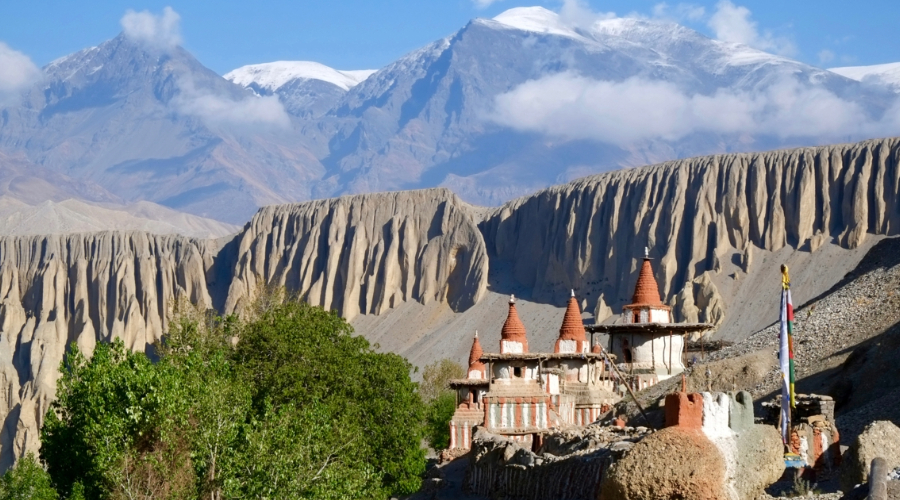
The annual Tiji festival, Horse race, Lhosar, and many other celebrations can also be observed nearby. The upper Mustang trek has so many wonders to uncover. The upper Mustang tour commences when you get to Pokhara. You can drive or fly to Jomsom from Pokhara and then start the trek to Kagbeni.
From Chele, we will continue to villages such as Syangboche, Ghami, and Charang before getting to Lo Manthang. Here, we will spend an additional day exploring the exceptional beauty of the Upper Mustang. Then, we walk down the Dhamkar and Syangbochen. The final trek day to Jomsom from Chhusang brings us back to Pokhara.
Obviously, we can take an additional day to witness the many natural wonders of Pokhara Valley before getting back to Kathmandu.
Trek Facts
- Total Duration of the trek: 14 days
- Total Distance of the trek: 422.5 km/ 262.52 miles from Kathmandu
- Beginning/Ending Point: Kathmandu (1400 m/ 4593 ft.)
- Trek Beginning/Ending Point: Jomsom (2740 m/ 8989 ft.)
- Maximum Elevation: Marang (Chogo) La (4230 m/ 13878 ft.)
- Best Season to Visit: Autumn (September to November) and Spring (March to May)
- Accommodation: Tea house/ Guest house/ Hotel
- Transportation: Private Jeep/ Public bus/ Flight
- Trek Category: Moderate
- Permits: Annapurna Conservation Area Permit (ACAP), Restricted Area Permit (RAP), TIMS
Top Highlights of Nepal Upper Mustang
- Stroll in the semi-arid land beyond the mountains.
- Horse-riding to the walled city of Lo Manthang.
- Witness the unbelievable beauty of colourful alpine vegetation- hues of orange, red, brown, and green.
- Enjoy the views of the majestic Nilgiri, Annapurna, and Dhaulagiri, ranging from opposite directions, which is a rear view of the world.
- Exciting meetings with the Yak Caravan, pristine waterfalls, beautiful lakes, and many other natural wonders.
- Explore the route that the traditional trans-Himalayan traders once used.
- A once-in-a-lifetime opportunity to live the unique practices of the Tibetan Buddhist culture for the true knowledge of peace and salvation.
- Enjoy the Tiji festival.
- Exploration of Shaligram (a fossilized stone or ammonite) at the bank of Kali-Gandaki.
- A scenic flight to Jomsom.
Documents for Booking
- A copy of your passport
- A copy of your flight ticket
- Two passport-size photos
- A copy of your travel insurance
- Emergency contact details
Culture and Wildlife on Upper Mustang Valley
Upper Mustang Valley Trek is a secluded trekking route in Nepal. The semi-arid vegetation of the region is considered a desert ecosystem in Nepal. The wildlife in this arid upper region of the Mustang varies from the wildlife in the lower Mustang region.
Landscapes
Upper Mustang is a popular tourist destination for its stunning landscapes. The region is defined by its rugged, wind-eroded cliffs in striking shades of orange, brown, and red. The desert situated in the high altitudes of Mustang and deep Kali Gandaki gorges make the region more vibrant.
Himalayan peaks like Annapurna and Dhaulagiri in the background, arid ecosystem, isolated beauty, and the sacred Muktinath temple offer its visitors the memory of a lifetime.
Wildlife
Though the region has barren landscapes, you can see a unique and wide array of wildlife in Upper Mustang. Snow leopards, Himalayan blue sheep, lynx, brown bear, Tibetan wild ass, Tibetan argali and scarce species of birds like the griffon vulture.
The area lies within the Annapurna Conservation Area, ensuring the protection of its fragile ecosystem. Spotting their elusive species contributes to increasing the level of excitement and adventurous experience.
People
The inhabitants of Upper Mustang are descendants of Tibet. They live in secluded walled villages, representing the ancient culture and way of life. Lo Manthang upholds cultural significance, with a local king maintaining symbolic significance.
Despite the harsh environment, the people here are friendly, welcoming their visitors with their warm hospitality. Their tight-knit communities remain steeped in ancient customs that a few outsiders might experience. The people living in Mustang Valley are comprised of Thakali, Tibetan, Gurung, Lopa, Sherpa, etc.
Culture
The culture of Upper Mustang is influenced by Tibetan Buddhism. Tibetan influence can be seen in their ancient monasteries, festivals, and rituals. The Tiji festival (generally falls in May), a colourful celebration featuring prayer chants, dances, and symbolic rituals of good over bad, is a major highlight in this region.
Hundreds of year-old monasteries like Ghar Gompa and the rich oral traditions, such as horse racing, showcase the deep cultural heritage defining life here.
A Typical Day on Nepal Mustang Trek
As soon as you reach Jomsom Airport, you will find yourself in the vicinity of the Annapurna Mountain range. Jomsom lies in the Lower Mustang region. From here, on the 2nd day, our trekking journey will begin.
Each trekking day begins with beautiful views of mountain views from the teahouse. After having breakfast at around 7 am, you will begin your trek at around 8 am.
Then, you will be walking stunning views along the desert-like terrain. Along the way, you can visit Gompas and see mani walls and prayer flags. Also, you can explore some of the unique caves on the way.
The caves are caved on the cliffsides, and it is still unknown why they are there. These caves are some of the oldest structures that you can see in Lo Manthang. Once you reach Lo Manthang, you can observe some cultural dances of the ancient royal city.
We will be having lunch in a teahouse on the way from around 11 am to 12 pm. The teahouses welcome their visitors with a satiating lunch, giving enough energy for the latter half of the trek. If required, you can keep some packed lunch.
Finally, you will head towards the final destination for the day, where you will spend your night. You might reach the teahouse at around 4 pm or 5 pm. If you have time, you can visit around. Then, during dinner, at around 8 pm, your guide will discuss the day’s experience and plans for the next day’s trek.
You can share your trekking experiences with each other in a warm and cozy dining hall. You will go to sleep at around 10 pm. Remember to order your breakfast for tomorrow so that it is served on time.
Altitude Chart for 14 Days Upper Mustang Nepal
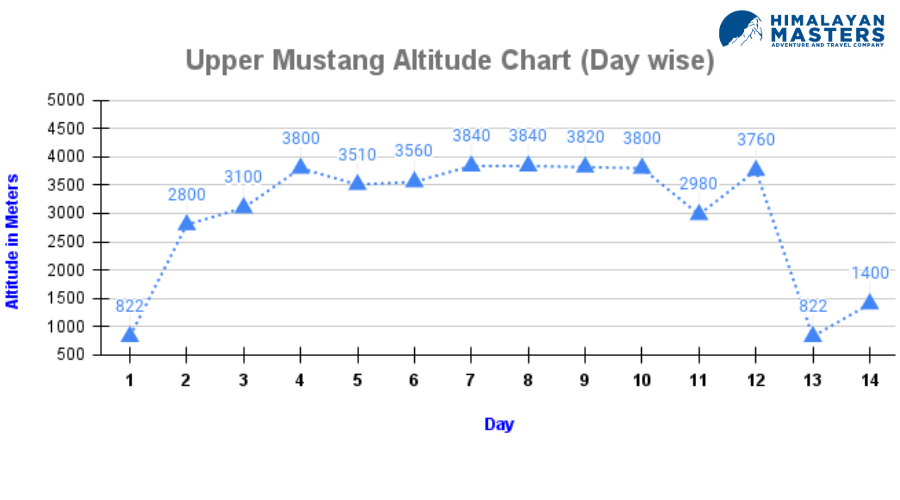
Notes to Remember for Trek to Lo Manthang Mustang
- We will provide free of cost airport pickup and drop-off.
- Upper Mustang is a restricted zone, so you need to obtain a Restricted Area Permit.
- A tall wall surrounds the ancient city of Mustang, Lo Manthang.
- The trip package includes all the meals, accommodation, transportation, permits, guide and porter.
- Though it is not compulsory, tips for guides and porters are expected. Normally, it is 10% of your trip.
- If your luggage is heavy, you can hire an additional porter. Or, if you have less weight, you can also share the porter.
- At all times, listen to the instructions given by your trek guide.
- We are not responsible for any vandalism that you might do during the trek.
- Since there are no ATMs or other online services on the trek route, it is recommended that you carry Nepali currency cash.
Upper Mustang Trek Itinerary for 14 Days (In Brief)
- Day 1: Kathmandu (1400 m / 4593 ft.) to Pokhara (822 m / 2696 ft.)
Distance: 201 km/125 mi
Time: 25 min flight or 6-7 hours driving - Day 2: Pokhara to Kagbeni (2800 m /9186 ft.)
Distance: 169 km/105 mi
Time: 20 min flight and 3 hours driving - Day 3: Kagbeni to Chele (3100 m / 10170 ft.)
Distance: 11.2 km/7 mi
Time: 5 hours trekking - Day 4: Chele to Syangboche (3800 m / 12467 ft.)
Distance: 11.5 km/7.1 mi
Time: 5 to 6 hours trekking - Day 5: Syangboche to Ghami/Ghemi (3510 m / 11515 ft.)
Distance: 9.3 km/5.1 mi
Time: 5 to 6 hours trekking - Day 6: Ghami/Ghemi to Charang/Tsarang (3560 m / 11679 ft.)
Distance: 10 km/6.2 mi
Time: 4 to 5 hours trekking - Day 7: Charang/Tsarang to Lo Manthang (3840 m / 12598 ft.)
Distance: 12 km/7.4 mi
Time: 4 to 5 hours trekking - Day 8: Acclimatization day at Lo Manthang (Sightseeing & Explore)
- Day 9: Lo Manthang to Dhakmar (3820 m / 12512 ft.)
Distance: 14.3 km/8.8 mi
Time: 6 to 7 hours trekking - Day 10: Dhakmar to Syangboche (3800 m / 12467 ft.)
Distance: 15 km/9.3 mi
Time: 6 to 7 hours trekking - Day 11: Syangboche to Chhusang (2980 m / 9777 ft.)
Distance: 14.2 km/8.8 mi
Time: 6 hours trekking - Day 12: Chhusang to Muktinath (3760 m / 12336 ft.)
Distance: 15.6 km/9.7 mi
Time: 7 to 8 hours trekking - Day 13: Muktinath/Jomsom to Pokhara (822 m / 2696 ft.)
Distance: 173.5 km/107.8 mi
Time: 20 min flight - Day 14: Pokhara to Kathmandu (1400 m / 4593 ft.)
Distance: 201 km/125 mi
Time: 7 to 8 hours Driving
ITINERARY
Day 01: Fly/Drive to Pokhara From Kathmandu
Flight Route: Kathmandu → Pokhara
Drive Route: Kathmandu → Mugling → Dumre → Pokhara
Beginning Point: Kathmandu (1400 m/4593 ft.)
Ending Point: Pokhara (822 m/2696 ft.)
Lunch: Between route
Kathmandu to Pokhara Distance: 201 km (125 mi)
Total Descent: 578 meters / 1896.3 ft.
Overnight: Pokhara
You can either drive to Pokhara along the Prithivi highway or fly to the domestic airport of Nepal. The 7 hours of drive in a tourist bus/private car along the Trishuli river bank and lush hills is also going to be fantastic. Or, you can fly above the lush green hills and witness the mountain vistas parallel to your eyes from the window seat of your plane.
If you fly to Pokhara, you will have some extra time to boat in Phewa and visit nearby places. In the evening, you can enjoy the nightlife at Lakeside and stay in one of the best hotels in Pokhara.
Note: You can also book our Upper Mustang trek from Pokhara itself. We can also pick you up from any other nearby city in Nepal.
Meal : Not Included
Accommodation : Hotel
Walking / Driving : 25 min flight or 7 hours drive
Day 02: Fly from Pokhara to Jomsom and trek to Kagbeni
Flight Route: Pokhara → Jomsom
Trek Route: Jomsom → Ekle Bhatti → Kagbeni
Beginning Point: Pokhara (822 m/2696 ft.)
Trek Beginning Point: Jomsom (2740 m/8989 ft.)
Ending Point: Kagbeni (2800 m/9186 ft.)
Lunch: Ekle Bhatti
Pokhara to Jomson Distance: 158.4 km (98.4 mi)
Jomsom to Kagbeni Distance: 10.6 km (6.58 mi)
Total Ascent: 1978 m / 6489.5 ft.
Overnight: Kagbeni
From the Pokhara airport, we fly to Jomsom in the morning. This half-hour mountain flight close to the Annapurna range is a beautiful experience. You can also drive to Jomsom from Pokhara off-road, but that’s a very long journey. Once we get to Jomsom, we get our bags ready and then start our trekking journey to Kagbeni.
Walking along the Kali Gandaki River on a newly built road in Mustang is a unique and thrilling experience. Sometimes, the route to Kagbeni from Jomsom might be windy during the day. In that case, you can opt for 20 minutes ride to Kagbeni.
After walking for about 2 hours, covering about 5 km/3.1 mi, we will stop at Ekle Bhatti for lunch. We will spend about an hour here and again continue our trek to Kagbeni for about 1 hour to stay overnight at Kagbeni.
About Jomsom
Jomsom is the district headquarters of Mustang. The population of Jomsom is 1370 (according to the 2011 census), and there are 430 households. The people living migrated from Tibet, which is reflected through their lifestyle, culture, and locality.
There is an airport that was established in 1962 A.D., even before the road construction in Jomsom. The town is complimented by several mountains around here with Kali Gandaki River and agricultural fields at its bank.
There are hospitals, an ayurvedic hospital, a veterinary hospital, a post office, an army barracks, etc., in Jomsom. If you have time, you can also go rock climbing. You can find basic to 4-star hotels serving all kinds of accommodation facilities here.
About Ekle Bhatti
Ekle Bhatti is just a lunch spot during trekking to Upper Mustang. There are a few teahouses where you can rest and have delicious meals.
About Kagbeni
Kagbeni is a beautiful traditional village. There is a fortress that was established in the late 16th century. Close by; there is a place called Dhakmar, where Guru Rinpoche is said to have slew an ogress named Balmo.
Kagbeni is the “Gateway of Upper Mustang”. It is a sacred pilgrimage among Hindu people at the bank of Kali Gandaki. The mountain view, including Nilgiri and Dhaulagiri, is very good from here. Further, you can visit a monastery that is over 100 years old.
Teahouses in Kagbeni
- About 10-15 basic standard teahouses.
- Attached bathroom with a hot shower is available.
- Free Wi-Fi.
- Charging plug in room.
- Dining hall with heating system.
Meal : Breakfast, Lunch and Dinner
Accommodation : Guest House
Walking / Driving : 20 mins flight and 3 hours walking
Day 03: Trek to Chele from Kagbeni
Trek Route: Kagbeni → Tangbe → Chhusang → Chele
Beginning Point: Kagbeni (2800 m/9186 ft.)
Ending Point: Chele (3100 m/10170 ft.)
Lunch: Chhusang
Kagbeni to Chele Distance: 11.2 km (7 miles)
Total Ascent: 300 meters (984 ft.)
Overnight: Chele
With the early morning light, you will wake up with Nilgiri before you. After walking for about 2-2.5 hours, about 5 km/3.1 mi north along the Kali Gandaki River, we will stop at Tangbe for a cup of tea/coffee.
With the refreshing tea/coffee break, we will walk for an additional 2-2.5 hours to reach Chhusang. Here, we are going to have our lunch and rest for some time. Then, we will head towards Chele.
Covering 1.5-2 km/0.9-1.24 mi, with an hour trek, we will reach Chele. It is our final destination for the day.
About Chhusang Village
Chhusang is a small village on the bank of the Kali Gandaki River. There are about 8-10 basic teahouses here. They offer a lunch menu with hot showers and a charging port in the room.
From here, you can see colourful hills washed in red and white above Kali Gandaki.
About Chele Village
Chele is another traditional village en route to Nepal Upper Mustang trekking. Green agricultural land with seasonal vegetables is the major attraction here. You can see grains cultivation ready to harvest during autumn, which was planted in spring. You can also see a primary school around here.
Teahouses in Chele
- About 4-5 basic teahouses.
- Free hot shower, Wi-Fi, and charging electronics.
- Warm and comfortable dining hall and sleeping room.
- Variety of veg and non-veg food menu.
Meal : Breakfast, Lunch and Dinner
Accommodation : Tea House
Walking / Driving : 5 hours walking
Day 04: Trek to Syangboche from Chele
Trek Route: Chele → Samar → Syangboche/Shyangmochen
Beginning Point: Chele (3100 m/10170 ft.)
Ending Point: Syangboche (3800 m/12467 ft.)
Lunch: Samar
Chele to Syangboche Distance: Around 13.5 km (8.3 mi)
Total Ascent: 700 meters (2296.6 ft.)
Overnight: Syangboche
With the fresh air in the mountains of Mustang, you will have your breakfast at around 7 am. Then, we will leave for Syangboche at around 8 am.
The first station, Samar, is 5-6 km/3.1-3.7 mi away from Chele. It is 2-3 hours long uphill trek, which is a little section on the route. Also, there are no teahouses in between before stopping at Samar for our lunch.
Having rested for about an hour and had lunch, we will head towards Syangboche. Syangboche is a 4-hour trek (around 8 km/ 4.9 mi) from Samar. There are also no teahouses in between. So, we will only have food at Syangboche and stay overnight there.
About Samar
Samar is a small local village. There are about 3-4 teahouses here. You can order lunch according to the menu.
While your lunch is being prepared, you can visit nearby stupas, monasteries, and gompas. The view of the jungle and mani wall along the way is an alluring view that you can see around here.
About Syangboche
Syangboche is another small traditional village on the Upper Mustang Trekking map. The Mustang Himalayan range and Annapurna Himalayan range are some of the most beautiful views from here.
Teahouses in Syangboche
- About 3-4 simple teahouses.
- Some teahouses have attached bathrooms.
- There is no hot shower or charging plug in the room.
- Neat and clean accommodation rooms.
Meal : Breakfast, Lunch and Dinner
Accommodation : Tea House
Walking / Driving : 6-7 hours walking
Day 05: Trek to Ghami from Syangboche
Trek Route: Syangboche → Ghiling/Geling → Jhaite → Nyi La → Ghami
Beginning Point: Syangboche (3800 m/12467 ft.)
Ending Point: Ghami/Ghemi (3510 m/11515 ft.)
Lunch: Packed lunch
Syangboche to Ghami Distance: 9.3 km (5.1 miles)
Maximum Elevation: 4020 meters (Nyi La)
Total Descent: 290 meters
Overnight: Ghami
In the morning, we plan to climb towards the steep Yamada La (4010 m/13,156 ft.). From the top, the views of the range, including Annapurna, Dhaulagiri, and Nilgiri, are absolutely stunning.
Then, we will head towards Ghami, where we will stay overnight. The first village that you will encounter is Ghiling village. It is a one-and-a-half-hour trek, about 6 km/3.7 mi from Syangboche. We can have some tea or coffee here.
After that, we will continue our trek for about 2 hours to reach Jhaite. From here onwards, it will be an uphill trek until we cross Nyi La (4020 m/13,198 ft). Then again, we will trek downhill until we reach Ghami.
We can stop at Jhaite for some tea items; there is only one basic teahouse here. There are no teahouses where we can have lunch, so you will need to carry a packed lunch on this day.
About Ghami
Ghami is a local village in the Upper Mustang Valley. There are local monasteries, stupas, and an over 100 years old Ghami Gompa that you can visit around here. Another alluring attraction here is the traditional seasonal cultivable farmland.
You can eat fresh, locally grown organic vegetables for dinner and breakfast.
Teahouses in Ghami
- 3-4 normal teahouses.
- Hot shower outside room.
- Shared bathroom outside room.
- Free Internet/Wi-Fi.
- Healthy and clean food.
Meal : Breakfast, Lunch and Dinner
Accommodation : Tea House
Walking / Driving : 5-6 hours walking
Day 06: Trek to Charang from Ghami
Trek Route: Ghami → Charang
Beginning Point: Ghami/Ghemi (3510 m/11515 ft.)
Ending Point: Charang/Tsarang (3560 m/11679 ft.)
Lunch: Charang
Distance: 10 km (6.2 miles)
Total Ascent: 50 meters (164 ft.)
Overnight: Charang
The 6th day of our trek starts with a downward walk to the colourful valley. After walking downward for about half an hour, after crossing a suspension bridge, we will then have to walk uphill.
On the way, you can see longest mani wall in Langtang. Additionally, you can visit a Japanese hospital and agricultural farm there.
Walking past the prayer flags on the way, we will then head towards Chinggel (Tsarang, Choya) la—3870 m/12,697 ft. Shortly after that, the path leaves steep slop and takes a slightly sloppy uphill.
The total trek distance for this day is 10 km/6.2 mi, which takes 5-6 hours to cover. There are no teashops in between the routes, so we will reach Charang for lunch.
You will be spending the rest of the day visiting around Charang, or you can also rest in your teahouse.
About Charang
It is another cultural village on the Mustang trek. There is an old royal palace of the Mustang King that you can visit. Furthermore, the views of the mountains of Mustang are excellent from here. Additionally, Tibetan-style Charang Gumba is another attraction here.
Teahouses in Charang
- 5-6 simple teahouses.
- Good quality food and accommodation.
- Free of cost hot shower, Wi-Fi, and charging batteries.
- Charging plugs in the room.
Meal : Breakfast, Lunch and Dinner
Accommodation : Tea House
Walking / Driving : 4-5 hours walking
Day 07: Trek to Lo Manthang from Charang/Tsarang
Trek Route: Charang/Tsarang → Lo Manthang
Beginning Point: Charang (3560 m/11679 ft.)
Ending Point: Lo Manthang (3840 m/12598 ft.)
Lunch: Lo Manthang
Charang to Lo Manthang Distance: 12 km (7.4 miles)
Total Ascent: 280 meters (918.6 ft.)
Overnight: Lo Manthang
Today’s path on our trek to Upper Mustang is the most exciting part of our journey. We will be reaching Lo Manthang today.
After having tummy full breakfast in your teahouse, we will take an uphill trek to Lo Manthang. We first climb to Lo-Gekar, one of the oldest Buddhist monasteries globally (even older than Tibet’s Samye Gompa). We take our time to visit this classic monastery before we trek to Lo Manthang.
You can also take a 2-hour horse ride for $100 per day. There are no teahouses on the way. So, you will be having lunch after reaching Lo Manthang.
Once you reach the ancient walled city of Mustang, Lo Manthang, you can visit around the town and get to witness the magnificence of restricted city.
We will only wander around the guest house in the evening and leave the rest of the journey tomorrow. You will be staying in one of the best lodges here.
About Lo Manthang Mustang
Lo Manthang is an ancient kingdom of Mustang. The royal family who established the Mustang lived here. You can still visit their royal palace within the walled city after getting a ticket for $10.
The walls surrounding the city are around 25 feet tall. You need to have a special Upper Mustang Restricted Area Permit to enter the city, for which it received its name, “Forbidden Kingdom of Nepal”.
Additionally, there are 3 gompas within the walled city that you can visit after issuing a ticket for another $10. The attached buildings, shopping complexes, art galleries, artifacts, etc., are other major attractions of Lo Manthang.
Other attractions around here are the Buddhist monastery school, the Tiji festival (which occurs in May), and a stunning view of the Mustang Himalayan range.
Teahouses in Lo Manthang
- 10-15 good quality lodges.
- Free of cost hot shower, Wi-Fi, electricity, etc.
- Clean, warm, and comfortable accommodation with an attached bathroom.
- Variety of veg, non-veg, desert, Mustang Valley wine, and Mustang Thakali dinner.
Meal : Breakfast, Lunch and Dinner
Accommodation : Guest House
Walking / Driving : Around 4 hours walking
Day 08: Exploration of Lo Manthang
The 8th day of our Nepal Upper Mustang Trek is a rest day. As we are at 3840 meters of Lo Manthang height, we need to acclimatize too. On this day, you can just stay in your lodge and rest or visit around.
Lo Manthang Mustang is a core of Buddhist culture and tradition in Nepal. Here are four unique temples- Chopramg Gompa, known as “New Gompa”; Jampa Lhakhang, known as “God House” (made in the early 15th century); Chodey Gompa; and Thubchen Gompa (made in the late 15th century).
Among the many wonders of Lo Manthang, you will be visiting the Namgyal Gompa, situated at an elevation of 3870 meters.
Then, you can also visit Thinggar towards northwest. This is a tiny village with about 40 small houses.
Finally, explore the king’s palace and Lo Manthang market and call the day off with a delicious local dinner.
Meal : Breakfast, Lunch and Dinner
Accommodation : Guest House
Day 09: Trek to Dhakmar
Trek Route: Lo Manthang → Ghar Gumba → Dhakmar
Beginning Point: Lo Manthang (3840 m/12598 ft.)
Ending Point: Dhakmar (3820 m/12512 ft.)
Lunch: Packed lunch
Lo Manthang to Dhakmar Distance: 14.3 km (8.8 miles)
Total Descent: 20 meters (65.6 ft.)
Overnight: Dhakmar
After enjoying an invigorating breakfast in Lo Manthang, we will initially ascend to 4070 meters and then climb to the Marang (Chogo) La Pass. It is the most demanding section of our trip at 4230 meters (13,878 ft). This is also the highest viewpoint of our trek.
Then, the journey is all about the downhill walk to the Charang River and Dhakmar. After walking for about 3 to 4 hours to Lo-Gekar via the monastery of Ghar Gumpa. We need to carry a packed lunch for the day.
After that, we will continue our trek for another 2-3 hours, covering 6-7 km, to Dhakmar. Stay overnight at Dhakmar for the day.
About Ghar Gumba
Ghar Gumba is an approximately 800 years old Monastery. It is believed that it was a place for mediation of Guru Padmasambhava. You can witness his footprint and explore various scriptures of Padmasambhava there. The monastery is a pure virtue of the Lo Nyingma Sect.
Ghar Gumba has a few basic teahouses where you will stop for tea/coffee.
About Dhakmar
Dhakmar is one of the most interesting and beautiful villages throughout the Upper Mustang trip. You can see vibrant red, brown, and white coloured mountain cliffs from here.
You can visit local gompas and the royal summer palace of the king of Mustang around here.
Teahouses in Dhakmar
- 3-4 simple teahouses.
- Neat and clean food and accommodation.
- No attached bathroom and hot shower.
- Free Wi-Fi, charging plug in room, and heating system in the dining hall.
Meal : Breakfast, Lunch and Dinner
Accommodation : Tea House
Walking / Driving : 6-7 hours walking
Day 10: Trek to Syangbochen from Dhakmar
Trek Route: Dhakmar → Ghami → Jhaite → Tamagaon → Syangboche
Beginning Point: Dhakmar (3820 m/12512 ft.)
Ending Point: Syangboche (3800 m/12467 ft.)
Lunch: Jhaite
Dhakmar to Syangboche Distance: 15 km (9.3 miles)
Total Descent: 20 meters (65.6 ft)
Overnight: Syangboche
With a tasty breakfast in Dhakmar, we will set out to reach Syangboche to stay overnight there.
Until Jhaite, we will take the same route as we took before. The trek route takes sloppy uphill until Nyi La and sloppy downhill along the stone walls and potato fields after that.
After walking for a few hours, we will have lunch at Ghami and then continue the trek. The latter part of the trek goes downhill through Chhunggar and Tamagaon.
Finally, after covering a total distance of 15 km/9.3 mi, we will reach Syangboche. You can share your trekking experience among other trekkers with a light Mustang wine, tea or coffee in the warmth of the dining hall.
Meal : Breakfast, Lunch and Dinner
Accommodation : Tea House
Walking / Driving : 6-7 hours walking
Day 11: Trek to Chhusang from Syangboche
Trek Route: Syangboche → Samar → Chele → Chhusang
Beginning Point: Syangboche (3800 m/12467 ft.)
Ending Point: Chhusang (2980 m/9777 ft.)
Lunch: Samar
Syangboche to Chhusang Distance: 14.2 km (8.8 miles)
Total Descent: 820 meters (2690 ft)
Overnight: Chhusang
Today, you will have to trek for a significant distance of about 14 km/8.8 miles. This is going to be around 6 hours trek on mostly downhill route.
After walking for around 3-4 hours, covering 12-14 km, we will stop at Samar village for lunch. You can visit Ramchung Cave nearby, if you want to and have time.
Then, we will continue our trek for another few hours to reach Chhusang and stay overnight there.
Although this route via Samar makes our trip a bit longer, it’s worth it.
Meal : Breakfast, Lunch and Dinner
Accommodation : Tea House
Walking / Driving : 5-6 hours walking
Day 12: Trek From Chhusang to Muktinath and Drive to Jomsom
Trek Route: Chhusang → Muktinath
Beginning Point: Chhusang (2980 m/9777 ft.)
Ending Point: Muktinath (3760 m/12336 ft.)
Lunch: Packed lunch
Chhusang to Muktinath Distance: 15.6 km (9.7 miles)
Total Ascent: 780 meters (2559 ft.)
Overnight: Muktinath
Leaving Chhusang Village in the early morning, we plan to walk above the valley of Muktinath. For that, we need to cross the river that is known for the fossil stones called Shaligrams (black holy stones).
The trek route is a gradual uphill track. The trekking trail passes via Gyu La (4077 m/13,376 ft.). Since there are no teahouses or even water, we need to carry packed lunches and bottled water on this day.
After walking for about 7-8 hours, we will reach Muktinath in the evening time. During this time, from Muktinath, you can see an awesome view of Annapurna, Dhaulagiri, and Tukuche.
Muktinath is the final trekking point of our Upper Mustang Trek in Nepal. From next day, you will be travelling in a private shared jeep to Jomsom.
About Muktinath
Muktinath is a sacred temple for Buddhist and Hindu devotees. Devotees from all around the world visit Muktinath as a pilgrimage destination. The 108-tapped natural spring is the major attraction here.
You can also reach Muktinath directly by vehicle. Additionally, it is popular for its local market, where you can buy souvenirs. There is a police checkpoint, a health post, Buddhist stupas, gompas, monasteries, and many more that you would like to explore.
Teahouses in Muktinath
- 15-20 from basic to standard teahouses and lodges.
- Neat and warm lodge rooms.
- Free Wi-Fi, hot shower, and charging plug in rooms.
- Attached bathroom.
- A variety of food options are available on the menu.
Meal : Breakfast, Lunch and Dinner
Accommodation : Guest House
Walking / Driving : 7-8 hours walking and 45 mins drive
Day 13: Fly/Drive back to Pokhara from Jomsom and Rest
Flight Route: Jomsom → Pokhara
Drive Route: Muktinath → Kagbeni → Jomsom → Marpha → Tukuche → Kalopani → Rupche Waterfall → Tatopani → Beni Bazaar → Kusma → Nayapul → Pokhara
Beginning Point: Muktinath/Jomsom
Ending Point: Pokhara
Lunch: On route (If Itinerary includes driving)
Jomsom to Pokhara Distance: 158.4 km (98.4 mi)
Total Descent: 2938 meters (9639 ft.)
Overnight: Pokhara
As our trekking is over, you will travel in a public or private vehicle or plane from now on. After a delicious breakfast early in the morning, we will drive to Jomsom to catch a flight to Pokhara. If not, we will drive to Pokhara.
Jomsom is just an hour’s drive from Muktinath via Kagbeni. The flight from Jomsom to Pokhara is usually arranged in the morning. We will be in Pokhara before lunch if the weather supports our plan.
Then, we can explore the nearby places, including Phewa Lake, Tal Barahi, Devi’s Falls, and caves. Or you can just rest in your room, enjoying hot showers and a spa. In the evening, join the nightlight of Pokhara.
Meal : Breakfast, Lunch (If Itinerary includes driving)
Accommodation : Guest House
Walking / Driving : 20 min flight
Day 14: Drive Back to Kathmandu from Pokhara
Drive Route: Pokhara → Dumre →Mugling → Kathmandu
Beginning Point: Pokhara
Ending Point: Kathmandu
Pokhara to Kathmandu Distance: 201 km (125 miles)
Total Ascent: 578 meters (1896 ft.)
Overnight: Kathmandu
Today, our trip ends with a scenic bus ride from Pokhara to Kathmandu. Alternatively, we can fly to Kathmandu and visit some more temples and monasteries around the valley—the choice is yours.
The drive is 201 km long and takes about 8 hours, while the flight is just about half an hour. Either way, we all gather for a farewell dinner in the evening and share our memories from the trip.
Meal : Breakfast and Lunch
Accommodation : Hotel
Walking / Driving : 7 hours driving
include / exclude
Trip Cost Includes
The Cost includes
- International and domestic airport pickup and drop-off by comfortable private car
- Kathmandu to Pokhara and back to Kathmandu by tourist bus
- Pokhara to Jomsom and back to pokhara by bus
- Guide for 14 days
- Breakfast, lunch and dinner with tea and coffee during the 12 days of trekking
- 11 nights of tea house accommodation in the trek
- Upper Mustang restricted area permits
- Annapurna Conservation Area permits
- Guide insurance, transportation, food and accommodation
- All government taxes and company service charges
Complimentary services from Himalayan Masters
- Use a 25-degree sleeping bag during the trip if needed.
- Trekking poles during the trekking if needed
- Use a pulse oximeter to check your spo2 and bpm at high elevations.
- Water bottles and purification tablets by Himalayan Masters
- First-aid kit box.
- Seasonal fruits for dessert.
- The Himalayan Masters brand duffle bag for the trip
- Himalayan Masters Brand Trekking T-Shirt and Cap.
- Emergency: One bottle of oxygen carried by the guide
Trip Cost Excludes
- International flight ticket
- Lunch and dinner in the Kathmandu
- Porter for the trek
- Tips for Guides
- Travel Insurance
- Accommodation in Kathmandu
useful info
Best Season For Upper Mustang Trek
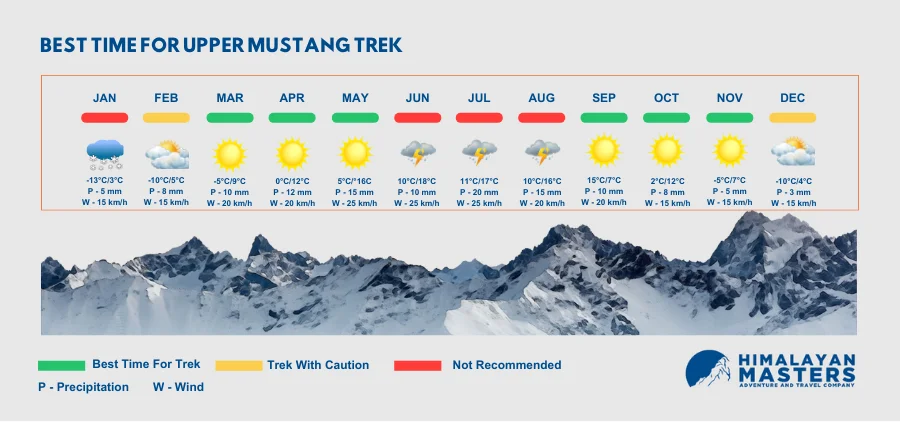
Nepal has four different seasons: autumn (September-November), winter (December—February), spring (April—May), and summer/monsoon (June–August). Autumn is the best time to go on the Mustang region.
Autumn Season (September to December)
The views during autumn are very clear, and the weather is warm, beautiful, and stable. The temperature ranges between 10°C and 20°C, or slightly lower in higher Upper Mustang altitude.
Further, the sky is clear, excellent view of panoramic view and their surrounding can be seen clearly. The Upper Mustang is generally dry during autumn with a pleasant climate, making autumn the best time to trek in this region.
Winter Season (December to February)
Winters are colder in Upper Mustang. The temperature can drop to -15°C at nights, with daytime temperature about -5°C to 10°C.
The cold and harsh winter makes trekking to the Upper Mustang challenging. The trail to Lo Manthang might be covered with heavy snowfall or dry, but the sky is dry.
Therefore, trekking in winter offers a more remote vibe but a serene scenery. Be well-prepared if you are thinking of trekking in this season.
Spring Season (March to June)
Spring is another excellent time to visit Upper Mustang. Upper Mustang during spring has mild temperatures with clear skies. It presents itself with a clear view of the surroundings and blooming alpine flowers.
The temperature in spring in Upper Mustang ranges between 10°C and 20 °C during the day and about 0°C to 5°C at night.
Summer/Monsoon Season (June to August)
Although almost all regions of Nepal are affected by monsoon rain, Upper Mustang receives minimal rainfall. The region lies in the shadows of the Himalayas, with southern slopes blocking the southern rain. By the time a rain cloud reaches Upper Mustang, the clouds have already dried up.
Therefore, summer might be warmer in the lower regions of the Mustang, while the upper region of Lo Manthang remains dry and accessible. The temperature could reach as high as 25°C and as low as 5°C, so an Upper Mustang trek in August or throughout summer offers suitable weather conditions and a magnificent view.
Weather Information
The Upper Mustang has a normally arid, high-altitude desert climate throughout the year. However, a few significant weather conditions can be experienced in 4 different seasons.
Autumn and spring are the most favourable seasons to trek in the Upper Mustang region. Especially, the Lo Manthang Mustang in April, May, August, September, October and November are some of the best months to trek in this area.
Autumn is a festive season, and it is the season to go trekking to Lo Manthang. The weather is stable, and the skies are clear, offering the best scenes.
Likewise, spring is another best time to visit the Mustang. You can see alpine flowers blooming here in this season.
In contrast, weather in winter is freezing cold, with nights as cold as negative 15°C. The region might have occasional snowfall, making the train challenging to navigate.
Finally, summer could be moderately warmer. The region receives very little monsoon rainfall, making it arid. Moreover, the Mustang trek is feasible in this season, too.
Mustang Region Nepal Trek Difficulty
The Upper Mustang Trek is considered an easy trek in the Himalayas of Nepal. Although the trek route is rugged, there is not much steep climbing that you need to do.
Altitude
The maximum elevation you will reach during the trek is 4230 meters at Marang (Chogo) La and 3840 meters (12,598 ft) at Lo Manthang. However, the trek to such an altitude is not as intense as Everest Base Camp or Manaslu Circuit Trek.
Having said that, it is essential to acclimatize to the sudden increase or decrease in elevation.
Daily Trekking Hours
On average, you need to trek for approximately 5-7 hours daily, covering around 10 to 15 km. Walking for such a long duration daily might be challenging for some people.
So, you need to walk at a constant pace and do not forget to stop at places for tea time.
Weather
Dry weather, which might be really hot during summer, could upset many. Also, a cold winter with occasional snowfall is surely going to be a challenge if you are trekking in this season.
Remote Terrain
The lower region of Mustang is somewhat busy, especially around Kagbeni and Muktinath. However, the upper region, in Lo Manthang, is not as developed as a trek route to Annapurna Base Camp or Circuit Trek.
So, if you are expecting comfort, high-quality food and accommodation, you might not have it.
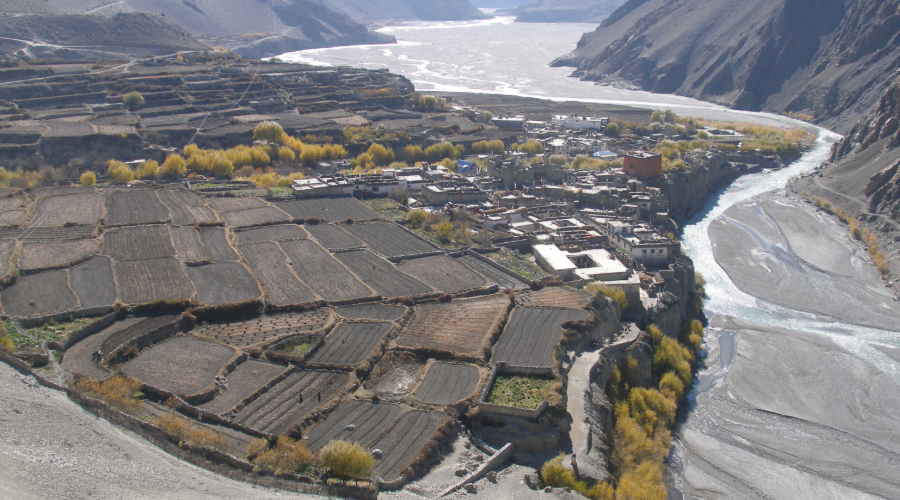
Roads on the Mustang Trek & How to Avoid
The Upper Mustang trek is a journey into the most remote trek trail with rich cultural experiences. However, after the recent development of motorable roadways, particularly from Jomsom to Lo Manthang, intersects with the traditional trekking route.
The roads have been constructed to connect local villages. However, they might be a letdown for those who seek wilderness. Hence, if you want to avoid these roads, you can hire a guide who knows more remote alternative routes, trek during off-seasons, or trek through cultural villages to compensate for roadways.
As an alternative route, you can trek via the high-altitude route Geling instead of taking lower road areas. Further, instead of the road from Kagbeni to Chele, you can opt for Tangbe and Samar through traditional villages.
Similarly, trekking during the off-season could be the best season. The trek route during peak trekking season, spring and autumn, is crowded with trekkers. Thus, if you are ready for an additional challenge, you can trek during monsoon or winter if you seek isolation.
Upper Mustang Trekking Experience
Upper Mustang is a paradise for adventure seekers and explorers, and there are a few genuine reasons for this. Firstly, Lo Manthang, the centre of Upper Mustang, and its exciting history captivate many tourists. This mountain valley is surrounded by walls on all sides and still has a king (although not legally).
The lifestyle, culture, and practices between these walls are hidden from the world, and only a few get to witness them from a close distance. Slightly far from Lo Manthang, you can see Gyakar and Ghar Gompa, who are more than 1200 years old.
Trek to Upper Mustang is also famous for Tiji and the horse racing festival. Prayer Chants and dances in colourful dresses are the charms of Tiji. This festival is celebrated around May, according to the Tibetan calendar.
Another highlight is obviously Muktinath temple, a pilgrim site for Nepalese Hindus and Buddhists. People of two different religions keep Muktinath at the superiority of their faith. Earlier, believers used to walk for over a month to reach this temple of Muktinath and ask the god for salvation and peace.
Beautifully seated along the colourful high cliffs, the Muktinath visit is a rejuvenating experience. Other attractions are the fascinating forts and monasteries of Kagbeni, hidden caves in the upper Mustang, unique myths inside the four walls of Manthang, and many more.
Trip Grade: Fitness Level, Medical, and Health
Fitness Level
Even though the Upper Mustang Trek is not challenging, it is also not a walk in the park. You will need decent physical fitness. As we need to walk for several hours and cover long distances, you need good stamina.
For that, you can train yourself by having short hikes or doing some cardio training.
Medical
Before embarking on a journey to Lo Manthang or any trek in Nepal, consider consulting with your physician. This could worsen your condition, especially if you are diabetic or expecting a baby. Also, if you have any medical conditions, mention them to your trek guide so that he/she can plan accordingly.
Health
Your health is the prime concern for us. Therefore, we will make sure that you eat healthy and easily digestible foods throughout the trekking expedition and stay in clean and warm accommodation. Over that, hydrating your body is essential, so you must drink at least 4-5 litres of water.
Special Training for Mustang Trek
There is no technical climbing on the trek to Upper Mustang Nepal. The trek route is easy and well-maintained, and it can be completed without any special training. However, it demands determination and some level of bodily well-being.
Although you do not need any special training, you can do some strength-building cardio exercises 1-month prior to trekking. You can go for short hikes or do running or jogging, swimming, cycling, etc., and yoga and meditation for peaceful mental stability.
Altitude Sickness During Mustang Valley Trek
One can experience altitude sickness above 2500 meters (above 8,200 ft). Initial symptoms of altitude sickness are headache, loss of breath, appetite, sleep disturbance, dizziness, and fatigue.
Once you see these early symptoms of altitude sickness, immediately further ascend and acclimatize. If you push any further, the condition might worsen.
However, with proper acclimatization, hydration, and healthy food, it can be avoided easily. Also, the Nepal Mustang trek is not very high-altitude, and we have an acclimatization day in our itinerary, so the chances of getting altitude sickness are low.
Emergency and Evacuation at Nepal Mustang Trek
Nepal Mustang Trek is a moderate-altitude trek and one of the easiest treks in the Himalayas. Therefore, the instances of emergency evacuation or evacuation by helicopter are very low.
Nonetheless, accidents can happen anytime, anywhere. So, we must be careful and prepared for them. Therefore, we recommend that you have travel insurance that covers your medical costs and helicopter evacuation.
Insurance for Mustang Trek
Travel insurance is a precautionary measure whenever you travel in mountainous and rugged terrain. Unexpected accidents, such as falls, altitude sickness, hypothermia (if you are travelling during winter), or head injuries, could occur.
Additionally, in some cases, trip cancellations or interruptions could be covered by travel insurance. So, always read and understand the tour policy.
Therefore, doing travel insurance could be a wise decision. It is better to be safe than sorry.
Upper Mustang Trek Cost
The cost of the Upper Mustang Trek can vary based on several factors. Such as the trekking agency you chose, the season you are travelling in, trek customization, or any additional services like hiring an additional guide and porter, private jeep, or flight.
Depending on all the factors, the Upper Mustang Valley Trek Nepal can cost between $1,500 and $2,000, more or less. With Himalayan Masters, you can go to this trek at the most affordable price of $1,850.
Food: It costs around $10-$15 per meal.
Accommodation: It costs around $5-$10 per night.
Permits: Annapurna Conservation Area Permit (ACAP) and Upper Mustang Restricted Area Permit
The trip package includes all our meals, accommodation, permits, guide, porter, and transportation costs.
How much cash should I carry for the trek?
There is no specific amount that you should carry for the trek. However, you can carry around $15 to $20 per day for daily expenses such as souvenirs, snacks, drinks, tea, etc.
Since there is no online banking system or ATM service in most of the Nepal Mustang trek, carry enough Nepali currency cash as you need.
ATM on the Mustang Trek Route
The Upper Mustang is a quite remote region. There is no ATM service on the Mustang trek route, so it is essential to carry sufficient Nepali cash. Make sure to get money exchanged before starting the trek.
Money Exchange
There is no ATM or money exchange services on the trek route. Therefore, remember to exchange adequate cash in Nepali currency in Kathmandu or Pokhara.
Required Permits for the Mustang Valley Trek
Upper Mustang Nepal is a restricted area. The route to the “forbidden kingdom of Nepa,” Lo Manthang, passes through the Annapurna Conservation Area. So, you need to obtain two permits for trekking around the Mustang Valley along with a TIMS card.
You need an Annapurna Conservation Area Permit (ACAP), which costs NPR 3,000 per person. Likewise, an Upper Mustang Restricted Area Permit costs $500 per person (for the first 10 days) and $50 per person per day beyond 10 days.
Additionally, you will need a TIMS card that costs NPR 2000 per person for foreigners.
You can issue all these permits at Kathmandu yourselves, or we will just arrange them for you.
Packing List for Mustang Nepal Trek
There is no specific packing list for the Upper Mustang Trekking, but you should not miss out on some items for a comfortable and successful trek journey.
Head: Beanie, neck gaiters, ear muff, etc.
Body: Thermal base layer and insulating mid-layer clothes, waterproof and windproof outer layer, down jacket, innerwear, thick trekking pants, wearing t-shirts, etc.
Hands: Thick gloves
Foot: Sturdy, wind and waterproof trekking boots that have ankle support
Other Gears: Backpack, sleeping bag, trekking poles, water bottle, sunglasses, sunscreen, lip balm, first-aid kit, water purification tablet, headlamp, sanitary items, camera, extra batteries, power bank, a few medicines, etc.
Accommodation and Food on the Trek Itinerary
The trek route of the Upper Mustang Trek itinerary typically goes through roadways, and some parts follow the actual trekking route. For this reason, the accommodation and food on the route is good enough.
Accommodations on the Trek Route
The accommodation en route to the Upper Mustang trek is on the teahouses. Around Lower Mustang, you can also find good quality lodges; on higher Upper Mustang altitude, the teahouses range from basic to standard quality.
The teahouses serve all kinds of foods from the menu. They also provide neat, warm and comfortable beds and blankets. The rooms are generally shared among trekkers, but private rooms can be arranged if booked in advance and during the off-season.
Wi-Fi, a hot shower, and an attached bathroom are available in some places. You can dine in a warm dining hall with a heating system. There, you can chat with friends or just enjoy a cup of tea or coffee.
Foods on the Route
Trekking the Upper Mustang route offers a wide variety of food options. You can order food according to the menu for breakfast, lunch, and dinner. The foods are generally prepared from homegrown, organic, and seasonal vegetables.
Since the motorable roads are accessible, raw ingredients are supplied from Jomsom, Manang, Mustang, or Pokhara.
Note: Normally, the 3-meal food on the trekking route to the Upper region of Mustang costs $25 to $30. However, accommodation and food cumulative can cost around $30-$40.
Breakfast at the teahouse on Mustang Trip
Tea, coffee, roti, bread, lemon ginger tea, veg and non-veg soup, egg items, muesli, corn flex, porridge, apple, pie, pancakes, etc.
Lunch at the teahouse on Mustang Trip
Dal Bhat (Mustang Thakali Thali) , noodle soup, potato items, roti/chapati, Mo: Mo, local style pizza, chicken and mountain sheep meat, spinach, carrot, onion, etc.
Dinner at the teahouse on Mustang Trip
Dal Bhat (Mustang Thakali Khana Set), noodle soup, potato curry, spinach and other seasonal vegetables, thukpa, thenthuk, Mo: Mo, etc., and Mustang valley wine (occasional).
Desert at the teahouse on Mustang Trip
Apple pie, banana pie, custard pudding, rice pudding, chocolate roll, sneaker roll, etc.
Electricity and Battery Recharge
The whole trek route is developed, so electricity is available in all parts of Mustang. Therefore, you can charge your accessories free of cost in any of the teahouses. Although it might not be possible to get a charging port in your room, you can always charge them at the dining hall or at the reception.
Water During Mustang Trekking
During the trek, bottled mineral water can be bought for around $2-$3 throughout the journey. Also, natural spring water can be easily found and drunk by purifying it with water purification tablets, which Himalayan Masters provides.
Note: Before drinking water from a natural spring, ask with your guide if it is drinkable or not.
Communication on the Mustang Nepal Trekking
The means of communication on the Mustang Nepal Trekking is via Wi-Fi and cellular network. You can get Wi-Fi with decent bandwidth throughout the trek for free. Additionally, you can get good network coverage from an NTC sim card and NCELL network in some places. The teahouses also have landline service, which you can use for an extra charge as per your usage.
Safety and Security on Trekking Mustang Region Nepal
Normally, Nepal is a safe destination to travel to. However, there might be demonstrations, thefts, or heinous crimes. In contrast, trekking in the Mustang region of Nepal is very safe.
The people on the mountain are hospitable and have mutual respect among locals and visitors. Nonetheless, we cannot eliminate the chances of natural threats such as landslides, avalanches, earthquakes, etc. Similarly, health issues or accidents that might occur during the trek.
Porter vs No Porter on Mustang Trip
It is not mandatory to hire a porter. However, having a porter when you are trekking will not only reduce your luggage load, but also it allows you to soak experience of trekking.
Just imagine carrying your 15 to 20 kg backpack and walking for 6 to 7 hours. It is surely going to be burdensome. However, if you do not have heavy luggage and are habitual of walking with it, then not having a porter on the Mustang Trip is no big deal. Additionally, you can also share the porter with other trekkers if you like.
Tips on Hiring a Porter for a Mustang Trip
- A porter can carry up to 26 kg. The less the weight, the easier it is for porters to carry. They will carry a duffle bag specially made for them to carry.
- You can share porter if you do not have much load, under 10-12 kg.
- Porters will only meet you at the teahouse, where you will stay overnight. They will walk faster than you, so carry a day pack to carry your essentials.
- Considering tipping them. The tip you give goes directly to them and their family.
Alternative Trekking Routes
There is not much alternative trekking route to Lo Manthang. The majority of the region has road access. The standard trek route outlined by Himalayan Masters is designed so that you can walk on the trekking trail rather than a motor road.
Geling (Ghiling) and Tangbe are some alternative trek routes that you will be trekking to skip the roadway.
Extending Trip to Nepal
Extending Mustang Valley Trek
You can extend your trekking journey to the upper region of Mustang, the Lo Manthang region, for a few days. Adding additional hikes from Lo Manthang could be an excellent plan to understand the livelihood of Upper Mustang.
Some of the popular hiking destinations in the region are:
Namgyal Gompa
The Namgyal Gompa is an ancient gompa in the mountainous region of Mustang. It is an approximately 2 hours hike from Lo Manthang, which is about 3 km away. The major highlight of the area is a Mustang Gompa in the Himalayas and the proximity to the Tibetan border.
Samar Palace
The Samar Palace is another royal palace around Lo Manthang, different palace from our itinerary. It is situated in the Thinggar village, a local Tibetan village.
The palace is a 5 km (one-way) Mustang hiking that can be reached in 2 hours. The Mustang village view and summer royal palace are the major highlights around here.
Korala Border
The Korala border is a Tibetan border. The total hiking distance to reach and return is around 20 km, which can be covered in 6-7 hours of trekking. There is a Tibetan market where goods are bought and sold. You can visit here if you want to buy souvenirs at a cheap rate.
If you are travelling in a vehicle, it takes 2 hours to reach there and 2 hours to return.
Ghom Cave
The Ghom Cave is a total trek of 14 km, 3 hours to go and 2 hours to return. You can see several small caves (exactly about 55 caves) carved on the mountain cliffs. It is believed that the caves were carved by humans where they used to live in ancient times to avoid cold climates.
Other things that you can see here are a Tibetan monastery and Teshor village. Teshor village is the origin point of the Kali Gandaki River. It is approximately 12 km from Lo Manthang, which is a 3- 4 hours trek.
Dhuk Village
The Dhuk Village in Upper Mustang is an old and remote village near the border of Tibet. It is known for its desert-like landscapes and Tibetan lifestyle.
Extending trips to different parts of Nepal
Nepal is a Shangri-la for travellers, with diverse landscapes, ecosystems, and cultural significance. If you are willing to extend your trip, some of the popular places that you can visit are Kathmandu, Pokhara, Chitwan National Park, and Bardiya National Park.
Other recommended destinations are Rara Lake, Gosaikunda Lake, Gorkha, etc.
Trip Extension to National Parks
Chitwan National Park and Bardiya National Park are some of the best national parks that you can visit after completing the trek. However, they are in different locations, but has wide variety of wildlife that you can explore.

Chitwan National Pak visit could be a short side trip which can be done through Mugling (a place between Kathmandu and Pokhara). You can stay at one of the best hotels in Chitwan and get to see a wide range of flora and fauna.
Jungle safaris, jeep safaris, elephant safaris, and a short canoe ride to see rhinos, gharial crocodiles, deer, and many other wildlife are some of the major highlights of Chitwan National Park.
Likewise, Bardiya National Park is another popular tourist destination in Bardiya. It is a less visited national park than Chitwan National Park. Further, tigers, elephants, and a wide variety of birds are some of the major attractions here.
Is the Upper Mustang trek worth it?
If you are asking whether the trek to the land beyond the mountains, decorated with beautiful brown and orange vegetation and unique culture, is worth it, then the question is itself very wrong.
A unique blend of alluring landscapes, rich Tibetan culture, ancient monasteries, and rare wildlife makes Upper Mustang every bit worth it. Due to this, trekkers to Upper Mustang have recommended this as one of the best trekking regions of Nepal, and most of them plan to revisit it. This trek is so worth your time and money. It’s definitely going to be a life-changing experience.
How to Book Mustang Trek
To book Mustang trekking with Himalayan Masters, you can contact us by any means you find convenient. You can contact us via email, WhatsApp, or phone or visit the office.
Moreover, you can book trek through our website by filling out an online form. Then, we will provide you with an itinerary as per your request. Finally, you can make the payment, and you are all set to go on a trek.
Trek briefings can be done online or in person. Once you land in Nepal, we recommend you visit our office in Kathmandu.
Why Choose Himalayan Masters?
Himalayan Masters Adventure and Travel Company is a team of highly experienced and professional individuals. We assure you that your trekking journey is completed successfully and comfortably. We offer one of the most feasible and convenient trek packages at the most affordable price.
Our team is dedicated to helping you before, during, and after the trek. Himalayan Masters is not just a travel company but a family.
Reviews
Thank you, Himalayan Masters, for an unforgettable experience! The Upper Mustang trek was fantastic—the Arid Mountain landscape, the traditional culture, the 1000-year-old Tibetan Buddhist monasteries! Sandip’s organisation leading up to the trek was excellent; our guide, Rishi, was open and friendly and took good care of us, and our porter, Namaraz, uncomplainingly carried our bags up hills and through strong winds. Himalayan Masters is an impressive, growing, young company that is professional, welcoming, and enthusiastic—I highly recommend it.
Megan ASwitzerland 🇨🇭
I recently returned from a trek to Nepal’s Upper Mustang organized with Himalayan Masters. I’m still reliving those incredible mountain vistas, walking through the region’s traditional villages and settlements, and of course, Tibetan Buddhist monasteries that have to be seen to be believed!
Sandip made the planning and preparation of the journey easy and straightforward and personally saw us off to our starting destination. Our guide, Rishi, emphasized that he and our porter, Namaraz, were there for us first and foremost, ensuring we understood each day’s walking plan and conditions and giving us flexibility when we needed rest days or alternative routes. When visiting the monasteries, he translated the monks’ explanation of the history and significance of these religious sites. He would always share fantastic insights into modern Nepalese life during the journey. One of my favourite memories of the trip was when he taught us the card game Dumbal after dinner one evening.
This being my first time in Nepal, I am extremely pleased we chose Himalayan Masters. They offer quality service and a great company-client ethic that I hope to be able to experience again one day.
Graham AshtonGermany 🇩🇪
FAQs
How long in the Upper Mustang trek?
The Upper Mustang trek can be two weeks to three weeks long. As per the Itinerary designed by the experts of Himalayan masters, this trek is 14 days long. However, it can be completed in a shorter time or within 4 days if you travel by vehicle.
How hard is the Upper Mustang trek?
Is there Wi-Fi/ Internet in Mustang trek?
What kind of accommodation is available in the Upper Mustang trek?
What are the major places to visit in Mustang?
What is the food I must try During the Upper Mustang trek?
What about the Upper Mustang trek permit?
Is the upper Mustang a desert?
How cold is Upper Mustang?
How many days do you need in the Upper Mustang?
Who is the king of the Upper Mustang?
Can you go to Upper Mustang by car?
Can we go to Upper Mustang by bus?
Where does Upper Mustang start?
Which areas are Upper Mustang?
How high is Upper Mustang from sea level?
Do I need a guide for the Upper Mustang?
Is it easy for non-Nepalese to enter the Upper Mustang?
What is the highest altitude in the Upper Mustang?
Where is Mustang located on the map of Nepal?
Speak to an Expert





Sandip Dhungana
Nepal 🇳🇵
Whatsapp: +977-9823636377
Speak to an Expert





Sandip Dhungana
Nepal 🇳🇵
Whatsapp: +977-9823636377


